Pros and cons of finishing
Unlike natural stone, cement mortar serves as the basis for artificial stone. A mixture of concrete, sand or expanded clay, plus binding additives, acts as a filler. Such a product has a lower density, and, accordingly, weight. What other advantages does this material have?
| pros | Minuses |
|---|---|
| Possesses durability and excellent thermal insulation. | The service life of a decorative stone is slightly less than that of a natural one. |
| The material is characterized by environmental friendliness and hypoallergenicity. | Some types of decorative items are not resistant to mechanical stress. |
| Decorating a balcony with decorative stone is easier than laying ceramic tiles, which allows you to make your own cladding. | If gypsum is used in production, the surface should be additionally protected from water. |
| It is relatively inexpensive, but also resistant to temperature extremes and mold. |
Types of texture of artificial stone
The construction market offers decorative products in the form of separate type-setting elements or solid sheets with a thickness of 3 to 12 mm. To give an aesthetic appearance, dyes are added to the composition, the quality of which determines the resistance of the material to ultraviolet radiation.
The textures have different designs:
- Imitation of natural stone. Usually this rough marble, granite or quartz with bulging, chipping and uneven edges.
- Butovy. Simulates large river pebbles or boulders texture.
- Under the brick. Panels or individual tiles to simulate brickwork.
- Polished stone. It is a conglomerate (industrial marble with the addition of natural stone chips) or porcelain stoneware.
- Imitation of sandstone and limestone. Sawn stones with a flat surface.
- Torn stone. Facing tiles with rough chipped stone texture.
- Artificial stone textures. Acrylic-based coating in the form of non-naturally occurring rocks.
More and more modern people are choosing the popular loft style for their interiors. Its invariable feature in the interior decoration of the balcony is decorative brickwork.
The photo shows a closed balcony, the walls of which are tiled in the form of red bricks with white grout.
Sometimes decorative tiles can be replaced with ecological ones.flexible stone... This blade is made by hand cutting a thin layer of sandstone and applying it to a fiberglass substrate:
The location of the decorative stone on the loggia
Thanks to easy installation, decorative elements can be combined with each other and placed on different parts of the balcony.
Walls
Balconies are open (cold) and closed (can be insulated). On open balconies, a wall adjoining the house is decorated with stone. On the insulated, finishing is carried out around the entire perimeter or partially.The larger the cladding area, the lighter it is recommended to choose shades: white, beige, gray.
Slopes
With the help of facing the slopes, you can select the windows or, conversely, combine them with the walls.
Arch between balcony and kitchen
If the balcony is combined with the kitchen, the combination of the rooms with stone cladding will be a good design solution. You can decorate both the entire doorway and part of it.
Partial finishing
When decorating a balcony, you can use fragments of products, for example, asymmetrically decorate the corners. And the horizontal stripes lined with tiles will visually expand the narrow balcony.
In the photo there is a spacious balcony decorated with white bricks. Thanks to the partial cladding, the space does not look congested.
Modern loggia design ideas
City dwellers are increasingly choosing natural materials for decorating apartments, preferring natural motives to technology. If you decorate the balcony with artificial stone and fill the space with indoor flowers, you can create a real green oasis.
In the photo, an analogue of sandstone and large plants create a tropical corner on the balcony.
In the modern world, overloaded with information, minimalism is becoming more and more popular. This trend has not least affected interiors. To leave more "air" in the room, adding natural accents, you can use decorative items in a small space.
Combining artificial stone with other finishing materials
Complete stone decoration is rare in modern interiors. Most often it is used in combination with other materials: for example, liquid wallpaper, cork. The most popular way to dilute masonry or masonry is by painting the walls.
The photo shows a contrasting combination of white gypsum tiles and dark gray paint.
Laminate, lining, decorative plaster can act as a partner material.
The photo shows a combination of two types of panels: a stone and a wood.
A combination of tiles and bricks looks advantageous in finishing the balcony.
Photos of balconies with stone trim
A stylishly designed balcony can become a dining room, bedroom, sitting area or even a library.
The photo shows an artificial stone, which is identical in appearance to the natural one.
When choosing decorative products for finishing a balcony, you should always pay attention to the color scheme of the interior and the material itself. You can play in contrast, or vice versa, combine similar colors.
In the photo there is a balcony that looks respectable thanks to the combination of noble color bricks and panoramic windows with dark frames.
How to decorate a balcony with a stone yourself?
There are two main finishing methods: with jointing and seamless, in which decorative elements are laid so that there is no space between the joints. This method requires professionalism: it is important that the glue does not leak out of the seam.
Step-by-step instructions for wall cladding
Laying with jointing can also be done by beginners:
- First, leveling and cleaning of the walls are carried out.
- If a pattern is planned on the walls, it is recommended to lay the tiles on the floor in order to combine them in advance.
- Glue is prepared according to the instructions.
- The glue is applied to the wall with a comb, then to the decorative material. The products should be laid from top to bottom: trimming is usually done from the floor. Each piece is glued to the wall with light pressure.
DIY finishing video guide
More details about self-finishing the balcony are described in this video:
Photo gallery
As a result of finishing the balcony with decorative stone, a durable, aesthetic and, what is important, unique space for a pleasant pastime is obtained.


 10 practical tips for arranging a small kitchen in the country
10 practical tips for arranging a small kitchen in the country
 12 simple ideas for a small garden that will make it visually spacious
12 simple ideas for a small garden that will make it visually spacious
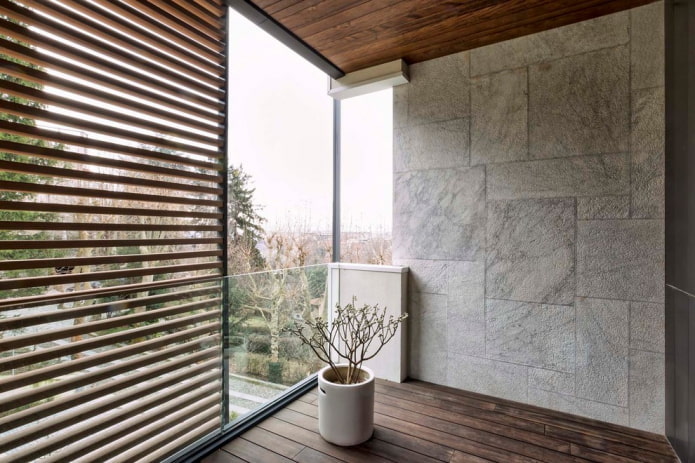
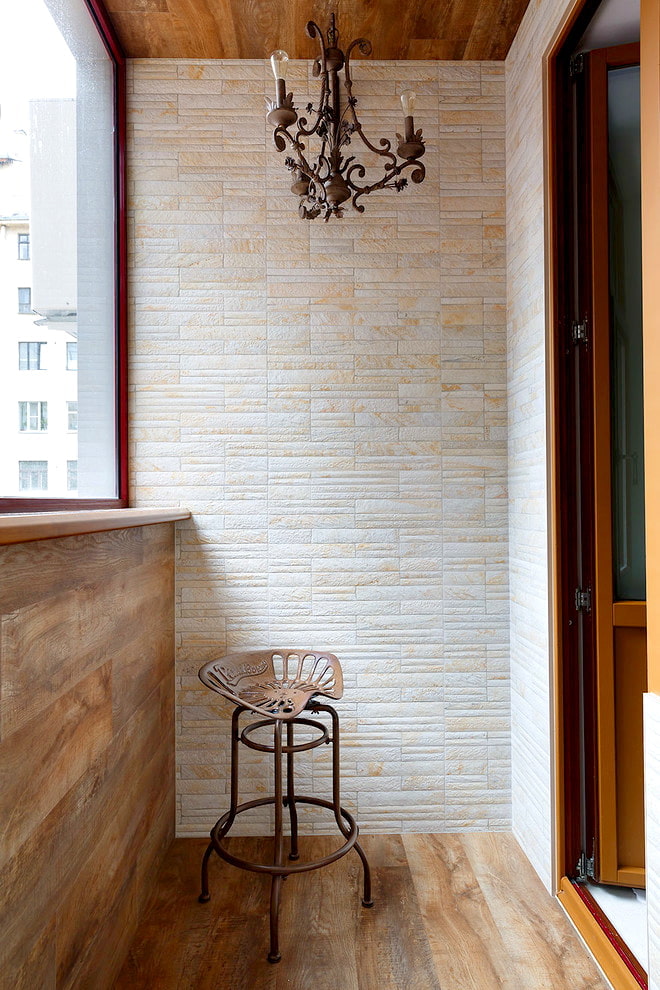
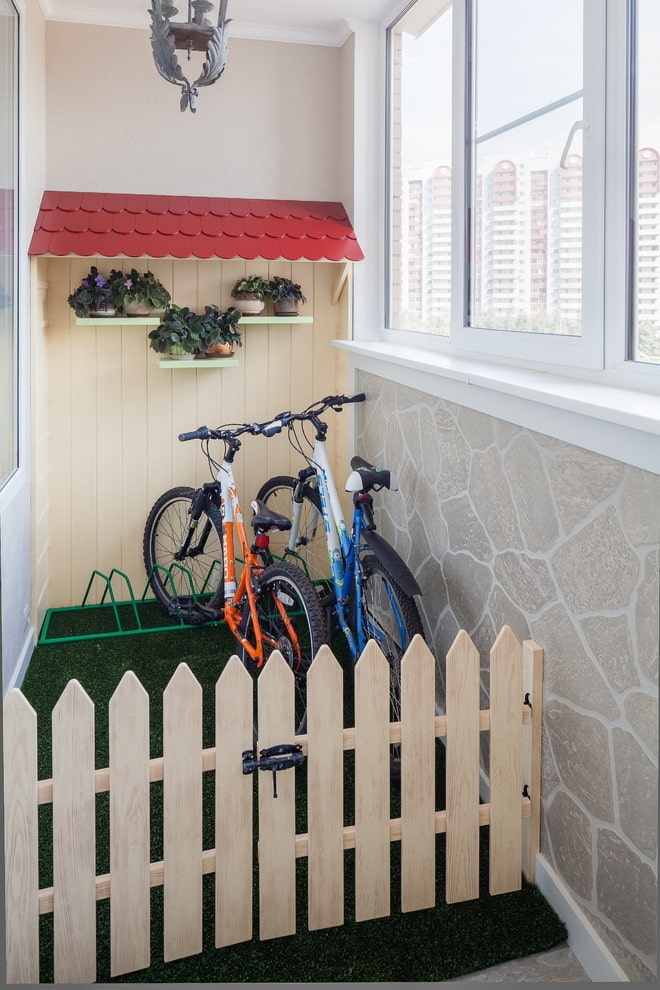

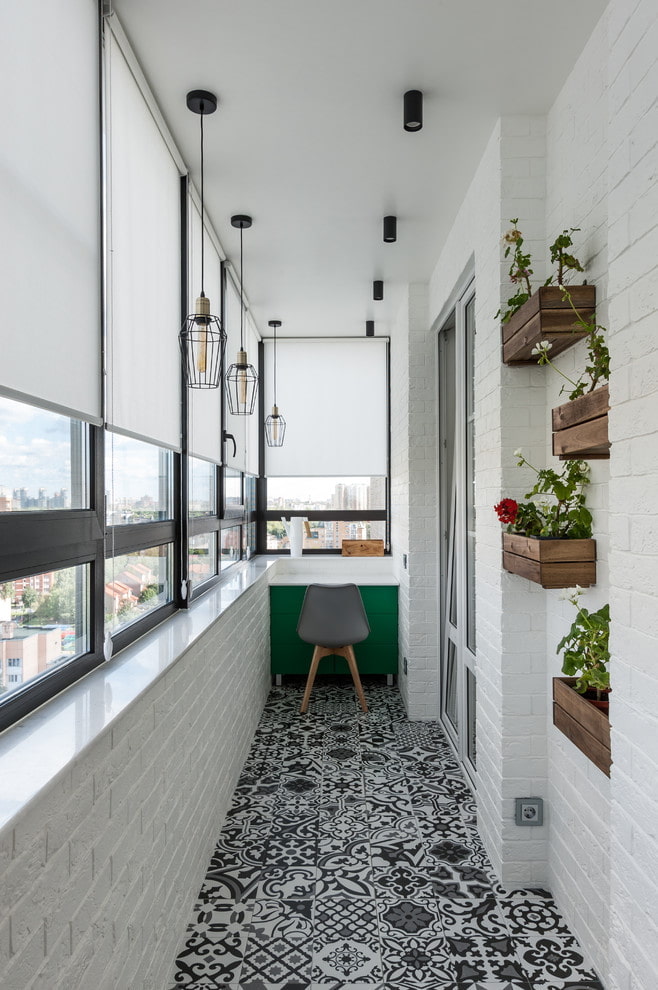
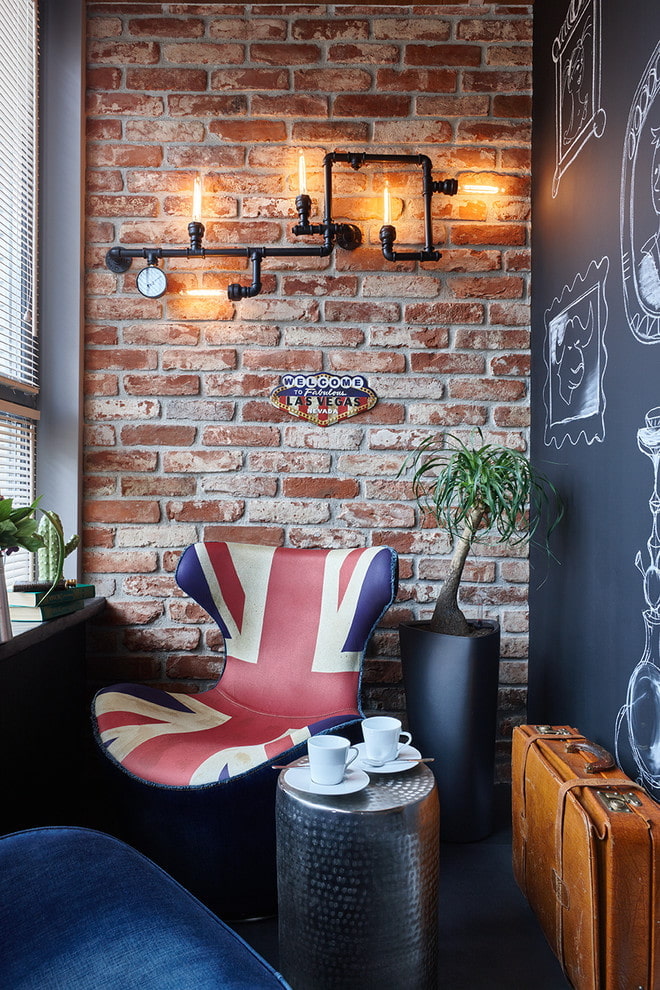
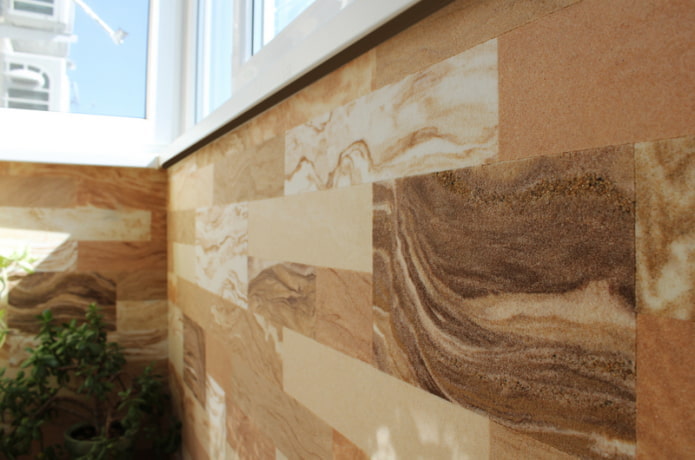
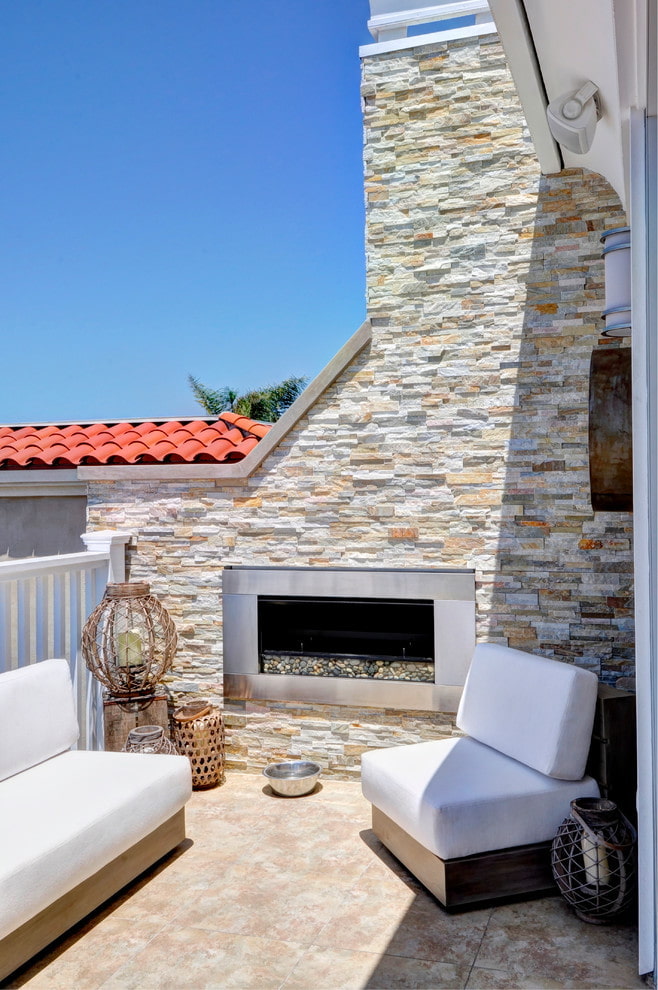
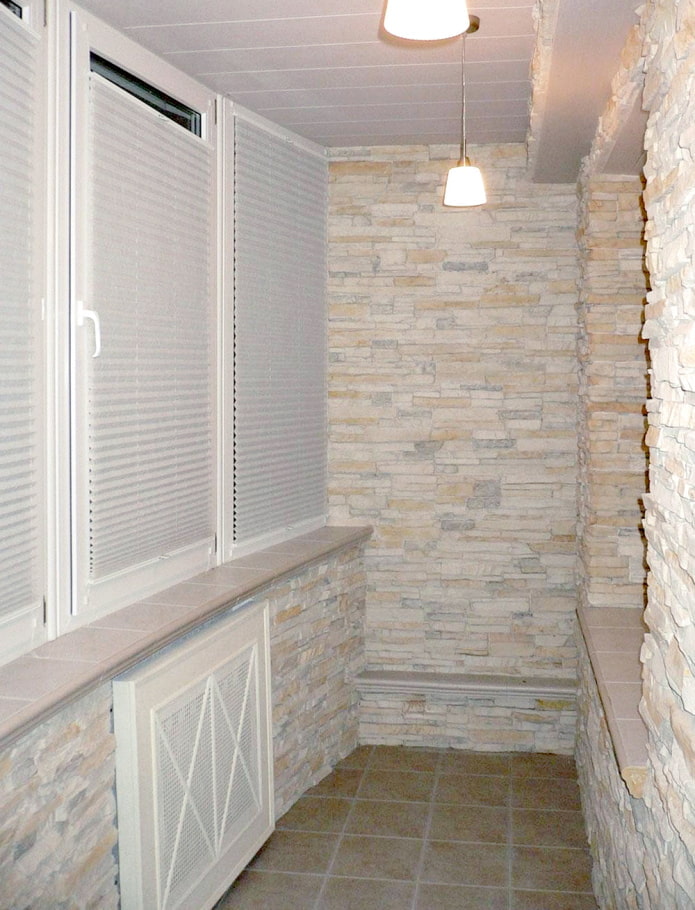
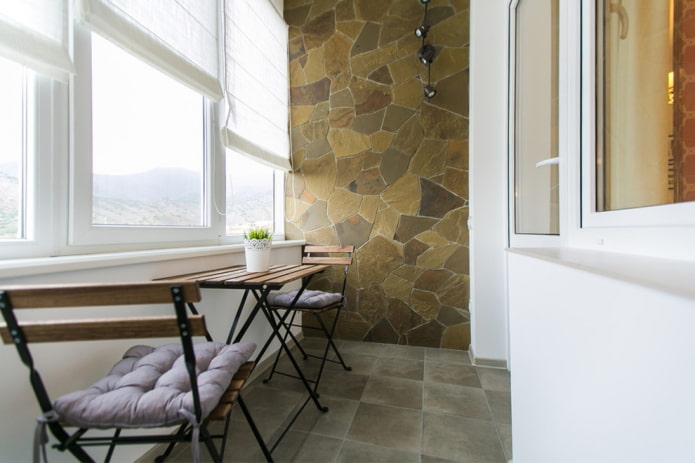
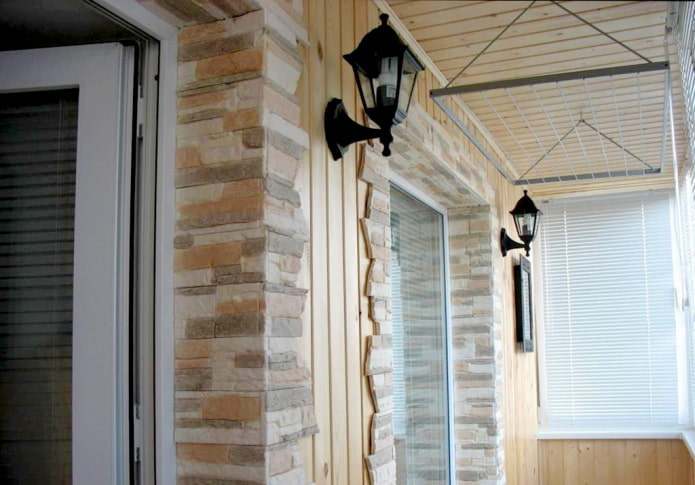
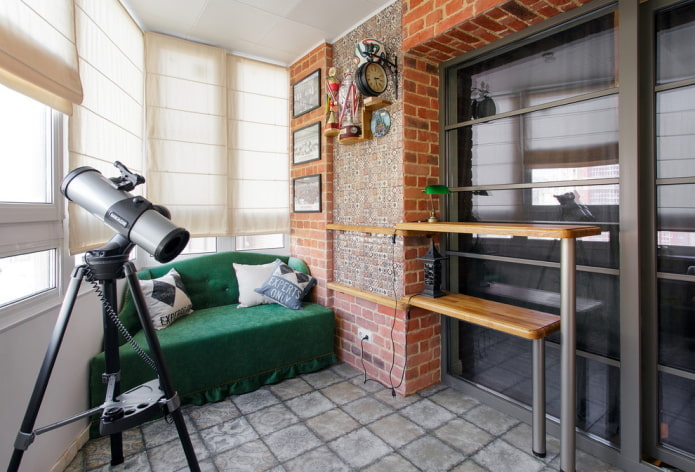
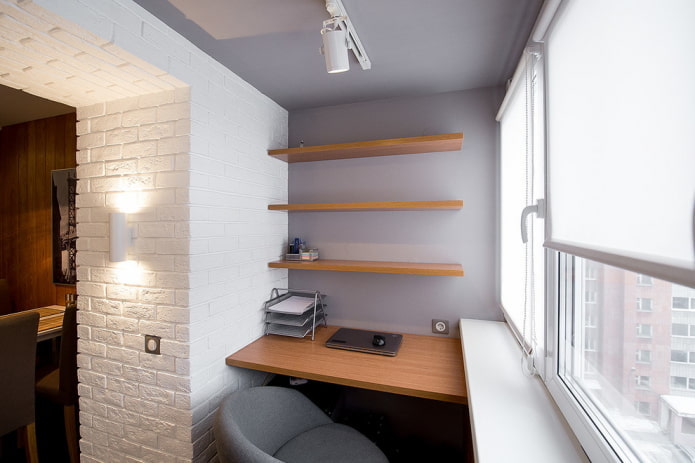

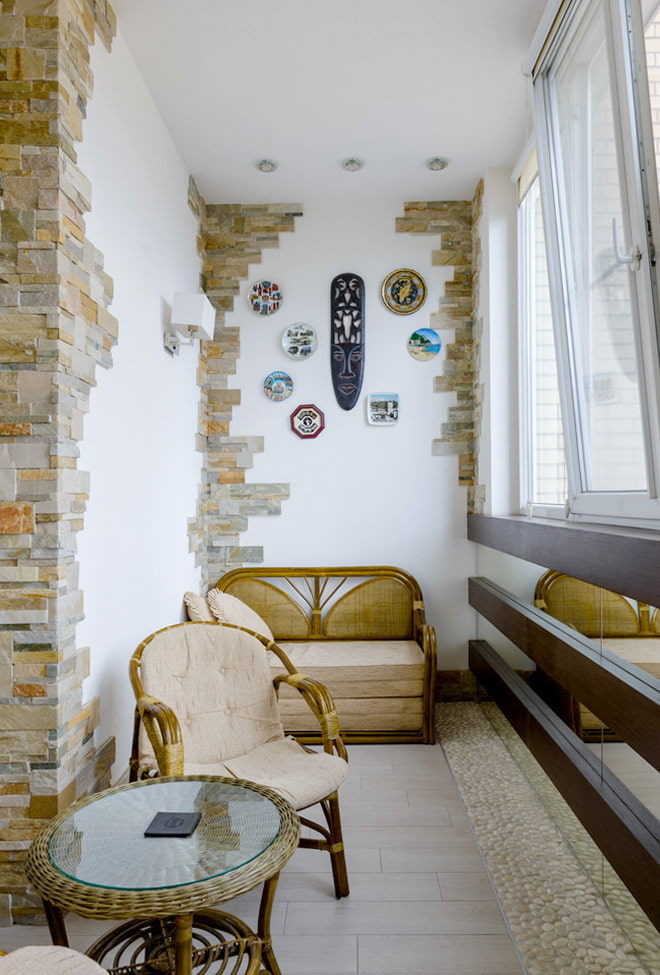
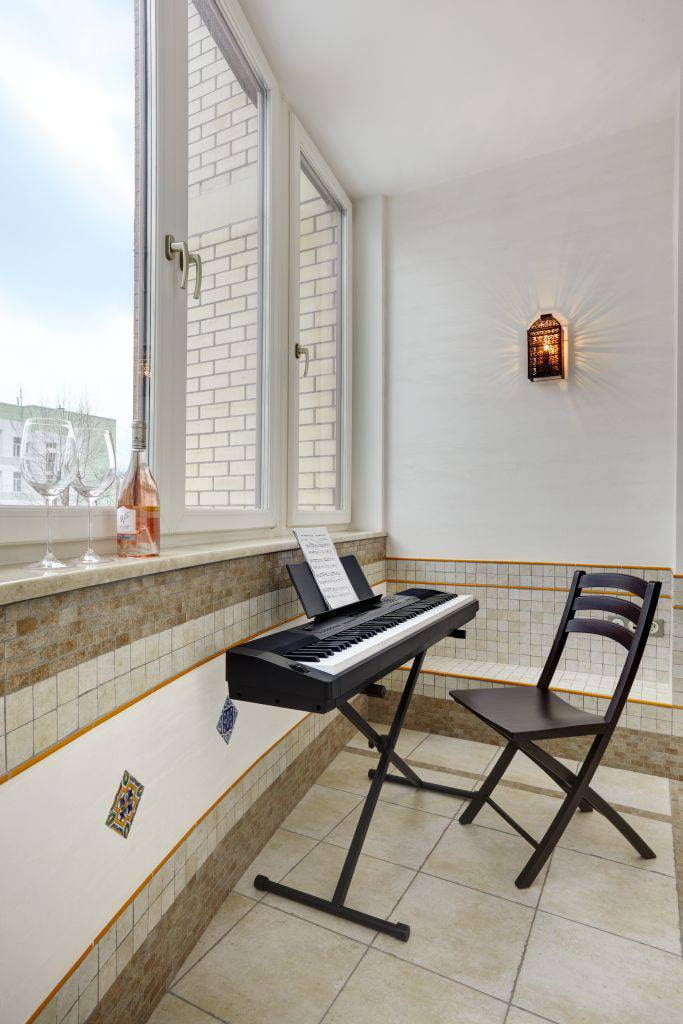
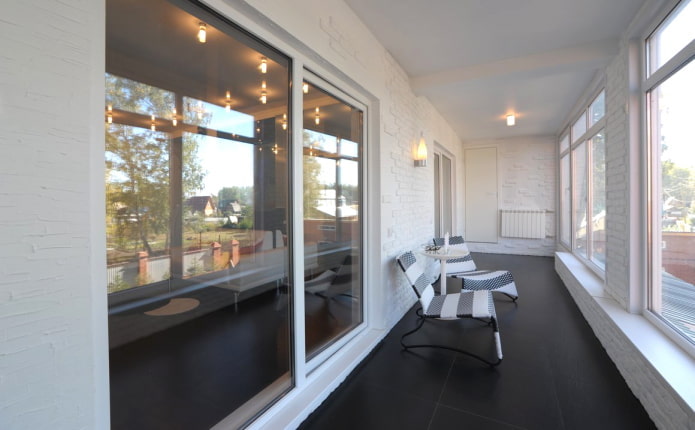

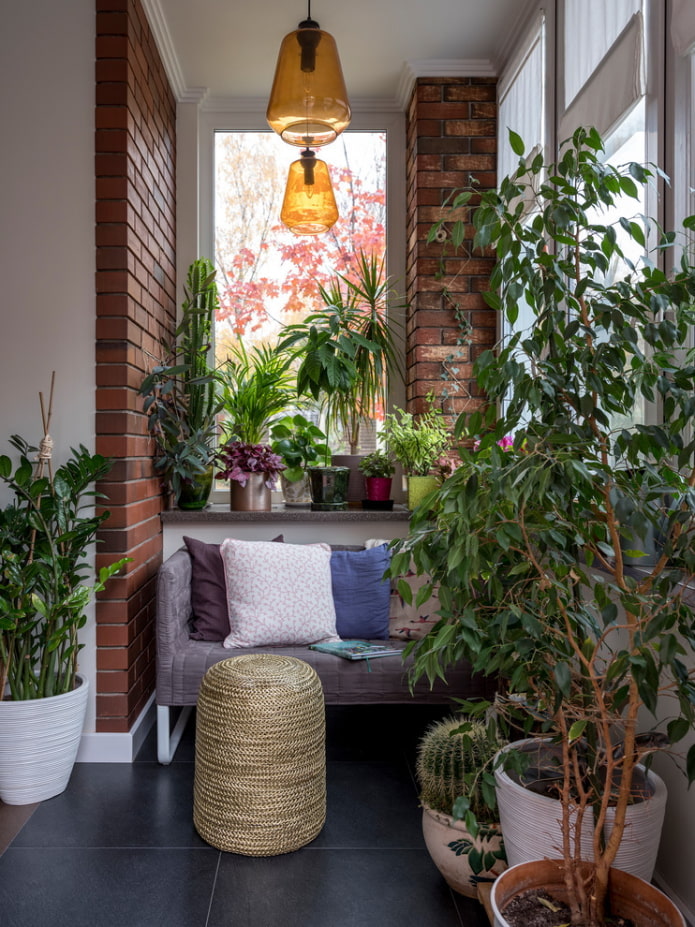
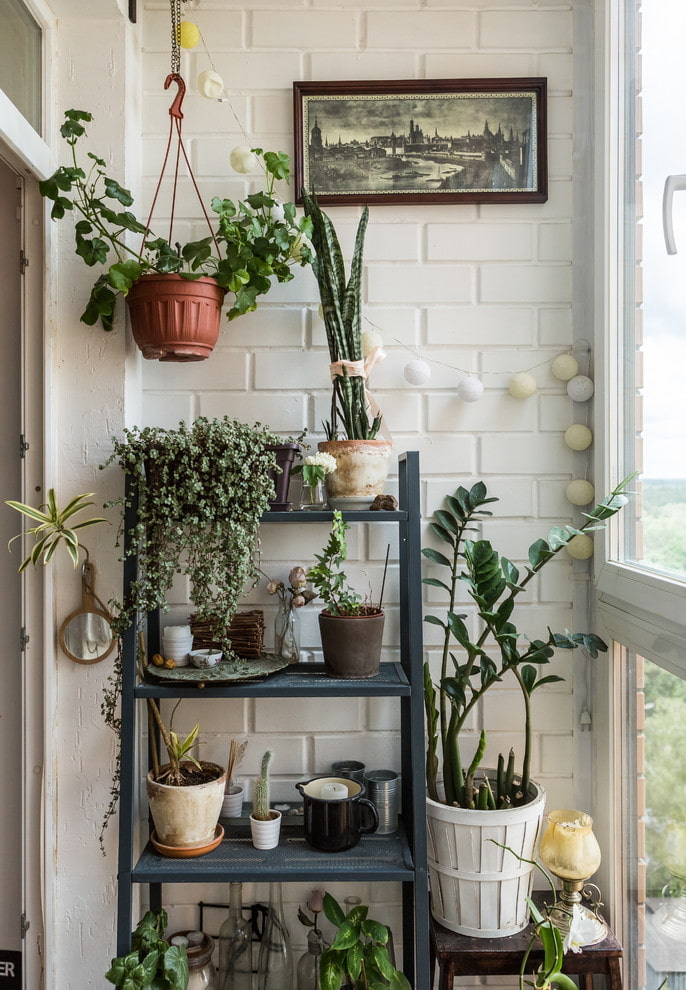

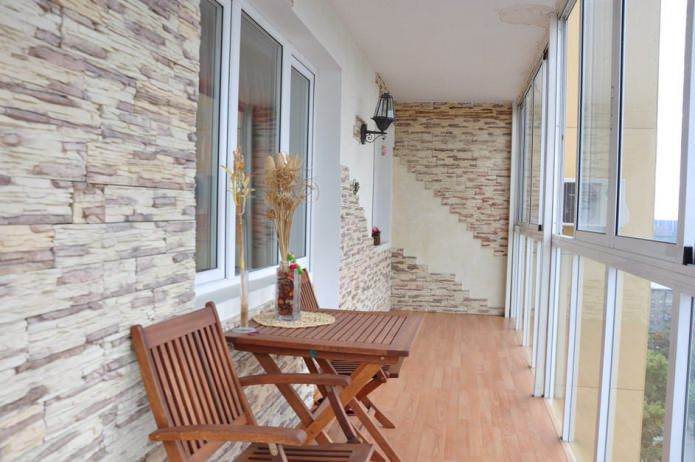
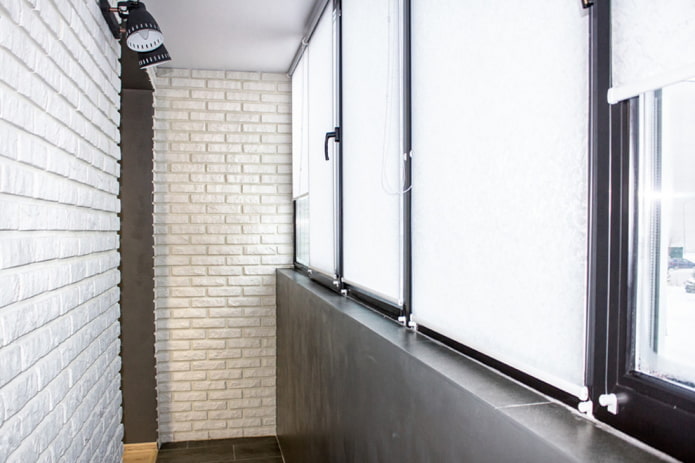
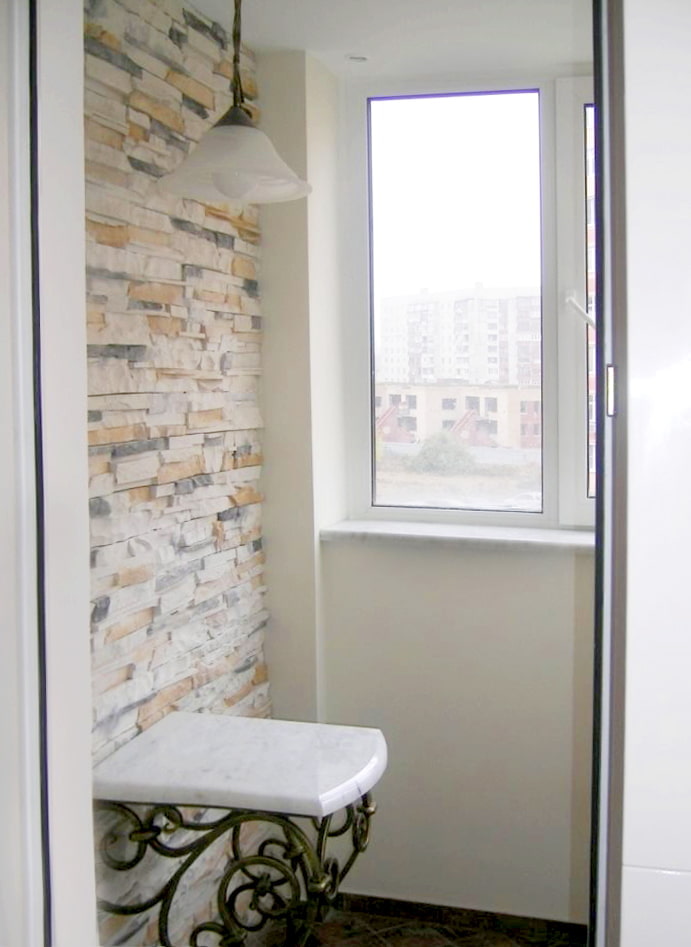
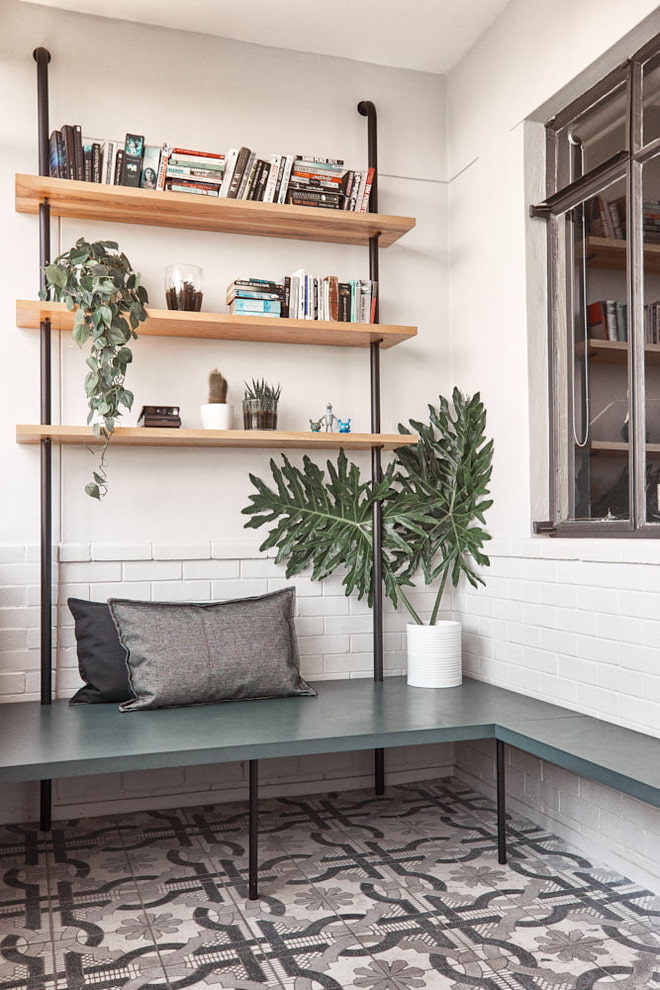
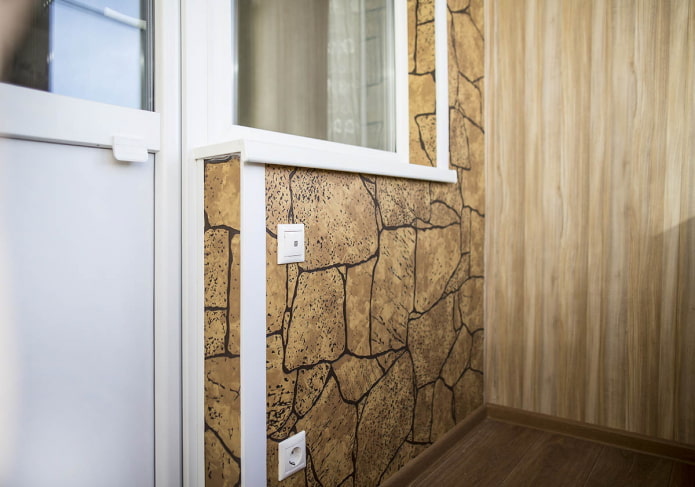
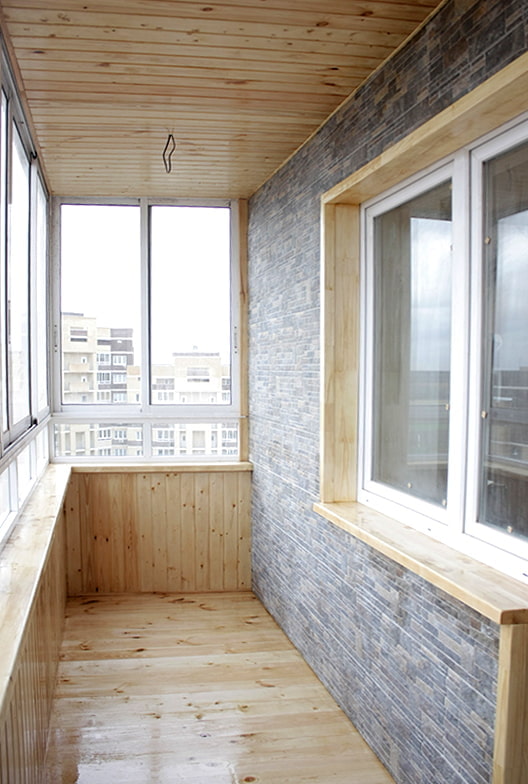
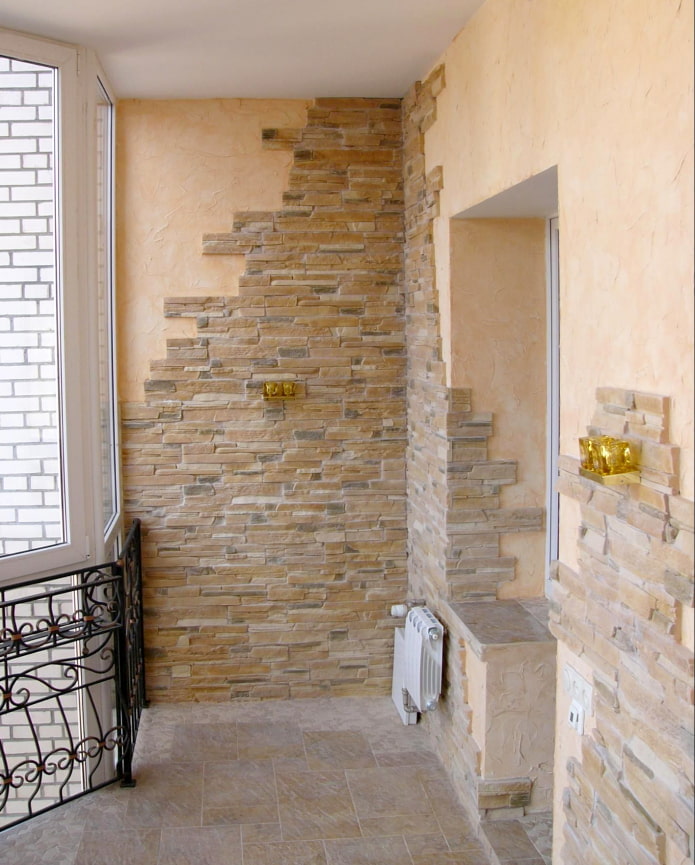
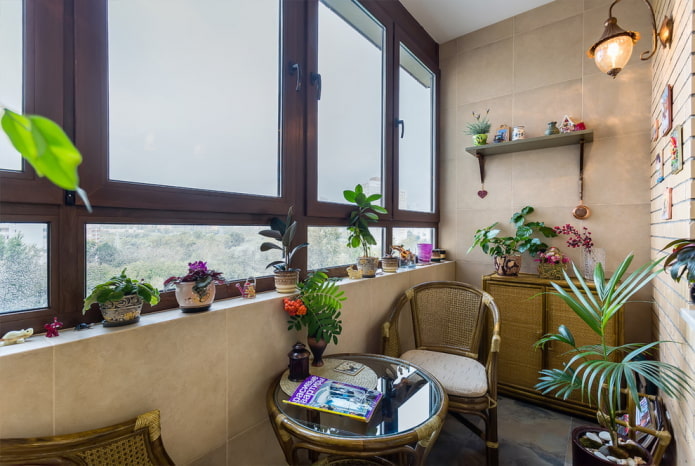
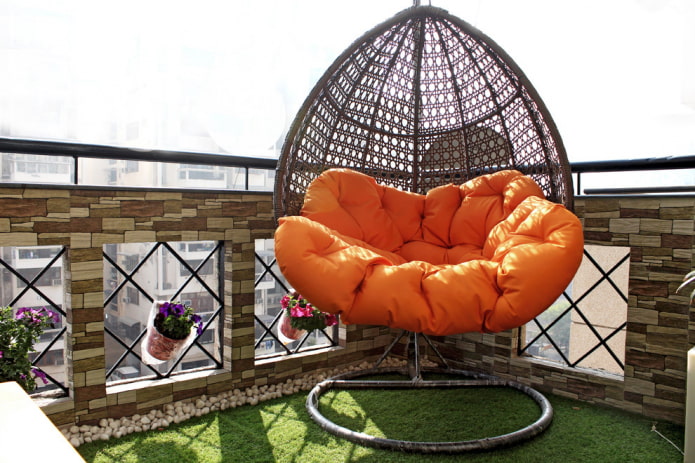
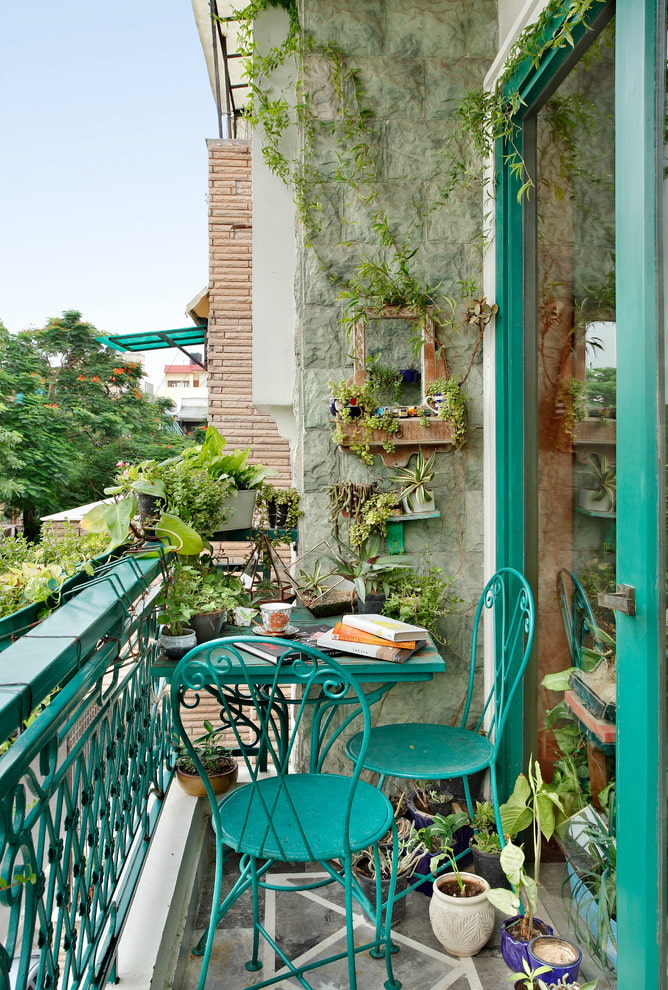
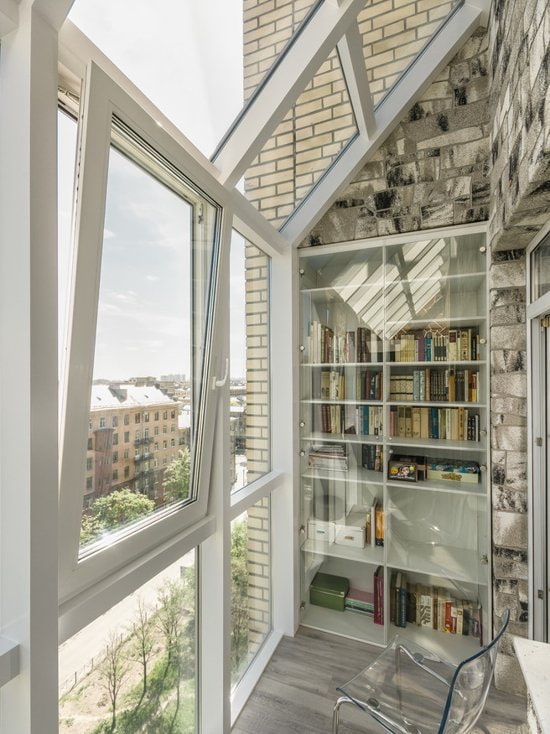
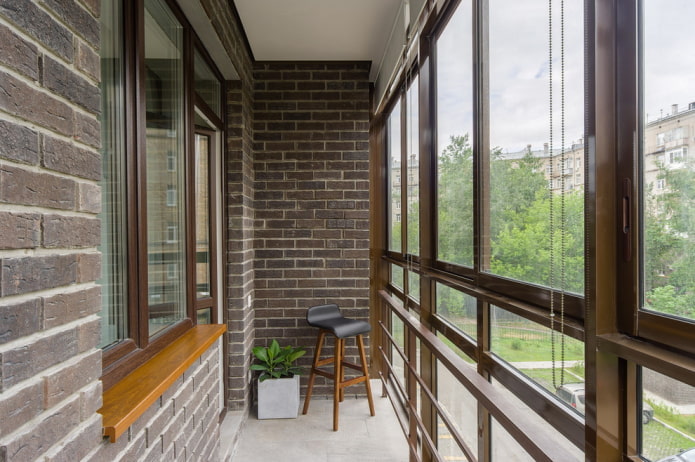
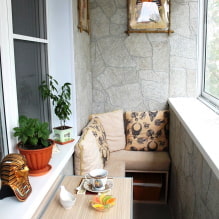

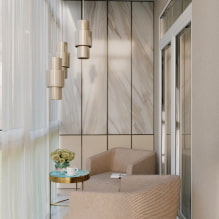
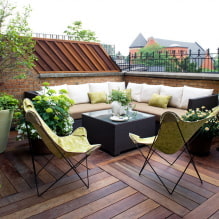
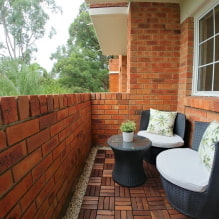
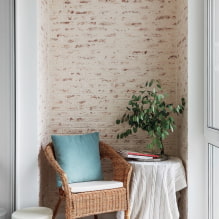
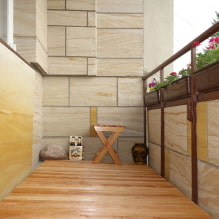
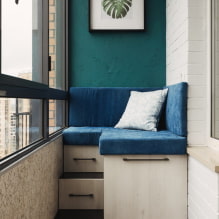
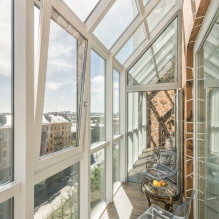
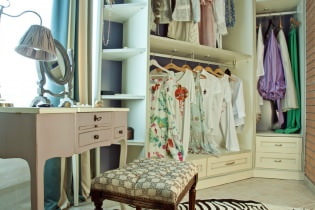 Balcony interior with dressing room
Balcony interior with dressing room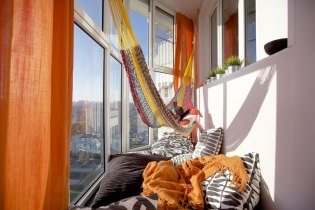 Loggia design 7 meters with hammock
Loggia design 7 meters with hammock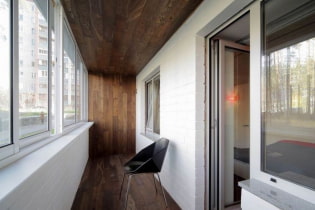 Ceiling decoration on a balcony or loggia: types of materials, color, design, lighting
Ceiling decoration on a balcony or loggia: types of materials, color, design, lighting Balcony and loggia design: design ideas, decoration, choice of color, furniture, style and decor
Balcony and loggia design: design ideas, decoration, choice of color, furniture, style and decor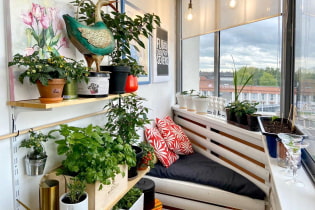 How to equip a balcony - cozy ideas for every taste
How to equip a balcony - cozy ideas for every taste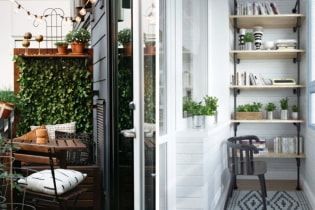 How to decorate a small balcony beautifully
How to decorate a small balcony beautifully